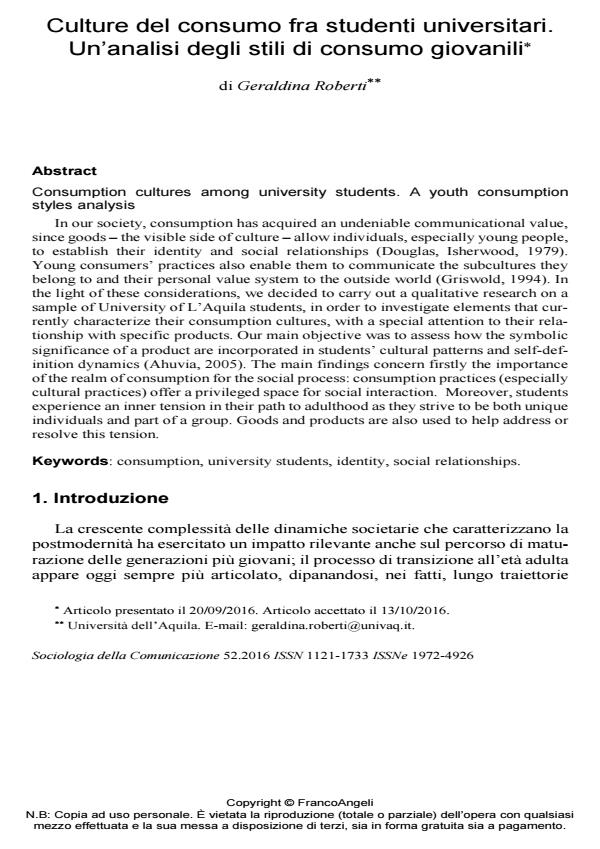Culture del consumo fra studenti universitari. Un’analisi degli stili di consumo giovanili
Titolo Rivista SOCIOLOGIA DELLA COMUNICAZIONE
Autori/Curatori Geraldina Roberti
Anno di pubblicazione 2017 Fascicolo 2016/52
Lingua Italiano Numero pagine 14 P. 70-83 Dimensione file 187 KB
DOI 10.3280/SC2016-052006
Il DOI è il codice a barre della proprietà intellettuale: per saperne di più
clicca qui
Qui sotto puoi vedere in anteprima la prima pagina di questo articolo.
Se questo articolo ti interessa, lo puoi acquistare (e scaricare in formato pdf) seguendo le facili indicazioni per acquistare il download credit. Acquista Download Credits per scaricare questo Articolo in formato PDF

FrancoAngeli è membro della Publishers International Linking Association, Inc (PILA)associazione indipendente e non profit per facilitare (attraverso i servizi tecnologici implementati da CrossRef.org) l’accesso degli studiosi ai contenuti digitali nelle pubblicazioni professionali e scientifiche
In our society, consumption has acquired an undeniable communicational value, since goods - the visible side of culture - allow individuals, especially young people, to establish their identity and social relationships (Douglas, Isherwood, 1979). Young consumers’ practices also enable them to communicate the subcultures they belong to and their personal value system to the outside world (Griswold, 1994). In the light of these considerations, we decided to carry out a qualitative research on a sample of University of L’Aquila students, in order to investigate elements that currently characterize their consumption cultures, with a special attention to their relationship with specific products. Our main objective was to assess how the symbolic significance of a product are incorporated in students’ cultural patterns and self-definition dynamics (Ahuvia, 2005). The main findings concern firstly the importance of the realm of consumption for the social process: consumption practices (especially cultural practices) offer a privileged space for social interaction. Moreover, students experience an inner tension in their path to adulthood as they strive to be both unique individuals and part of a group. Goods and products are also used to help address or resolve this tension.
Parole chiave:Consumption, university students, identity, social relationships.
Geraldina Roberti, Culture del consumo fra studenti universitari. Un’analisi degli stili di consumo giovanili in "SOCIOLOGIA DELLA COMUNICAZIONE " 52/2016, pp 70-83, DOI: 10.3280/SC2016-052006